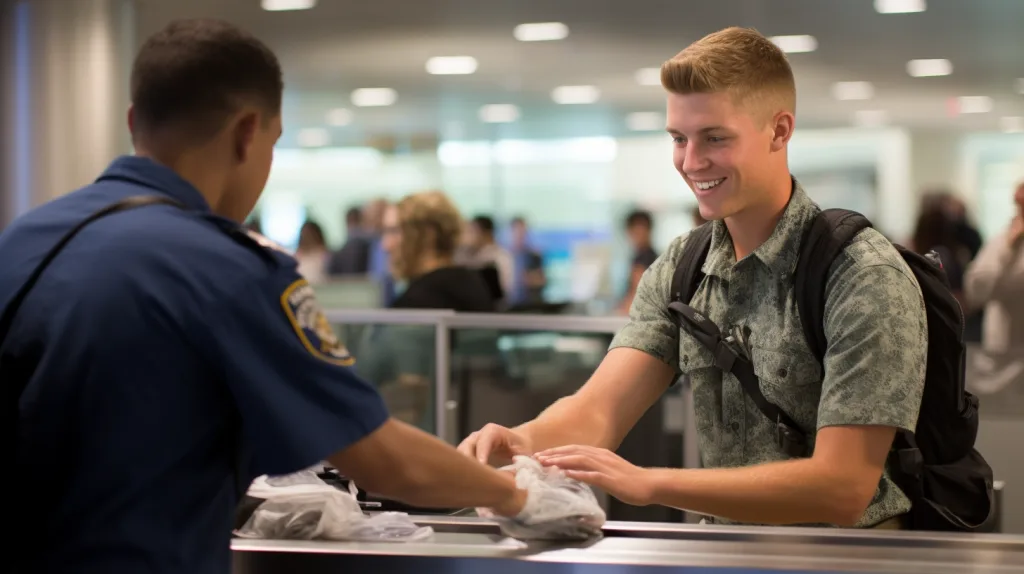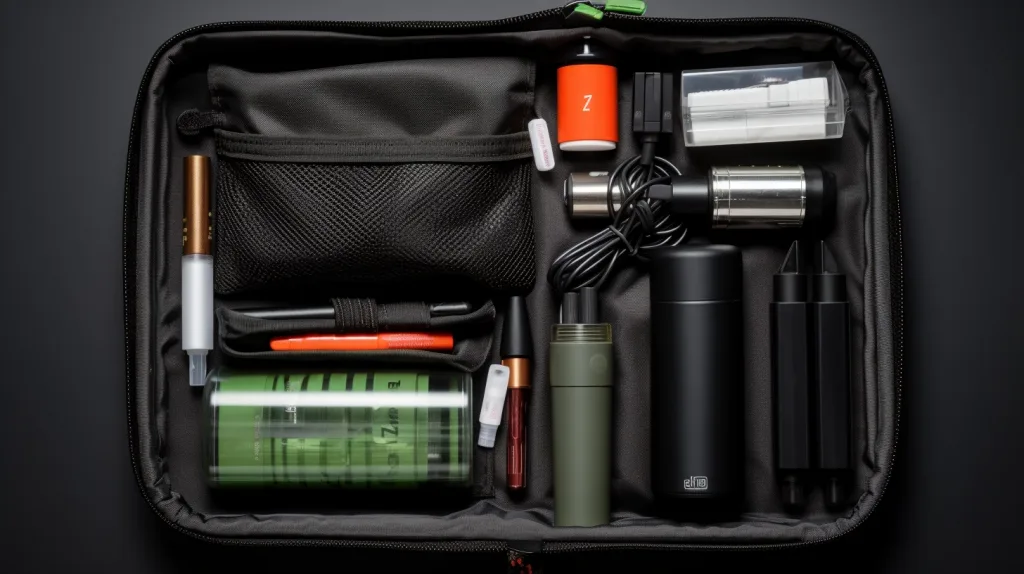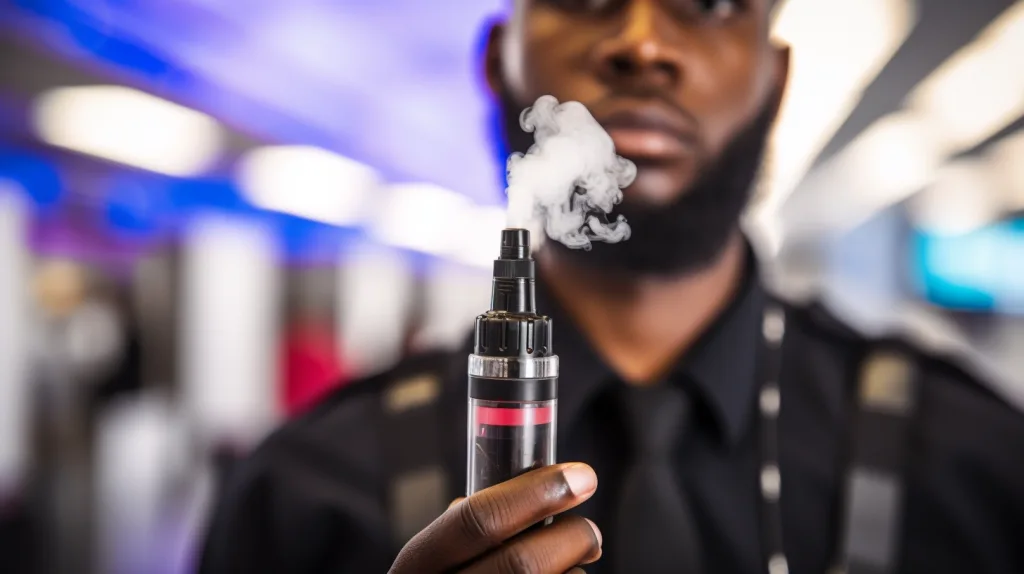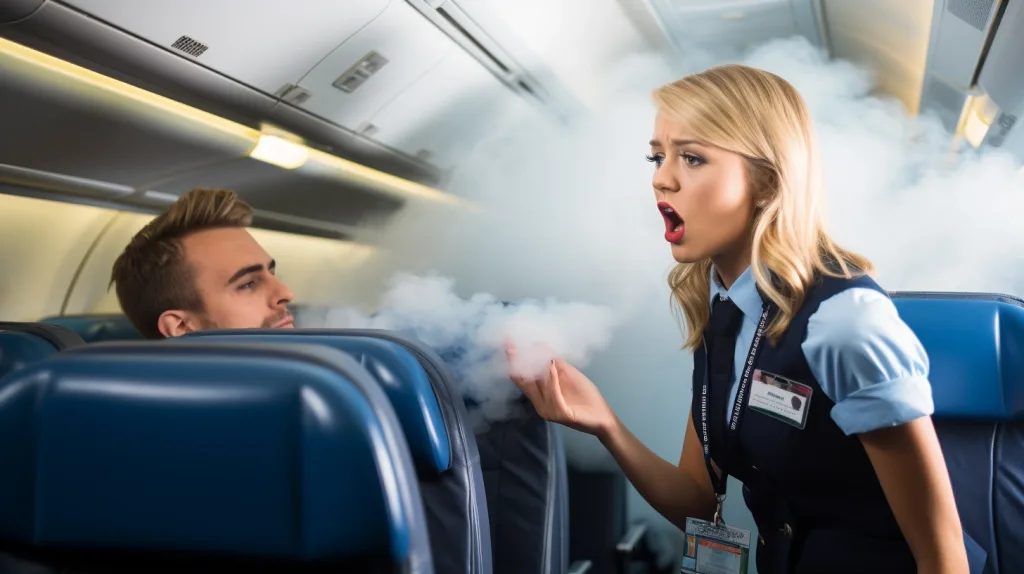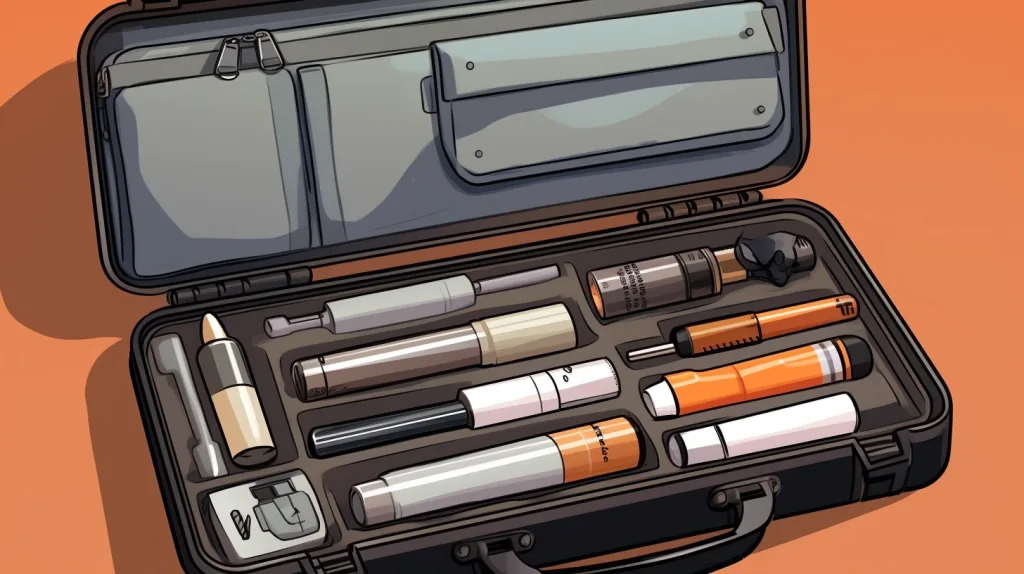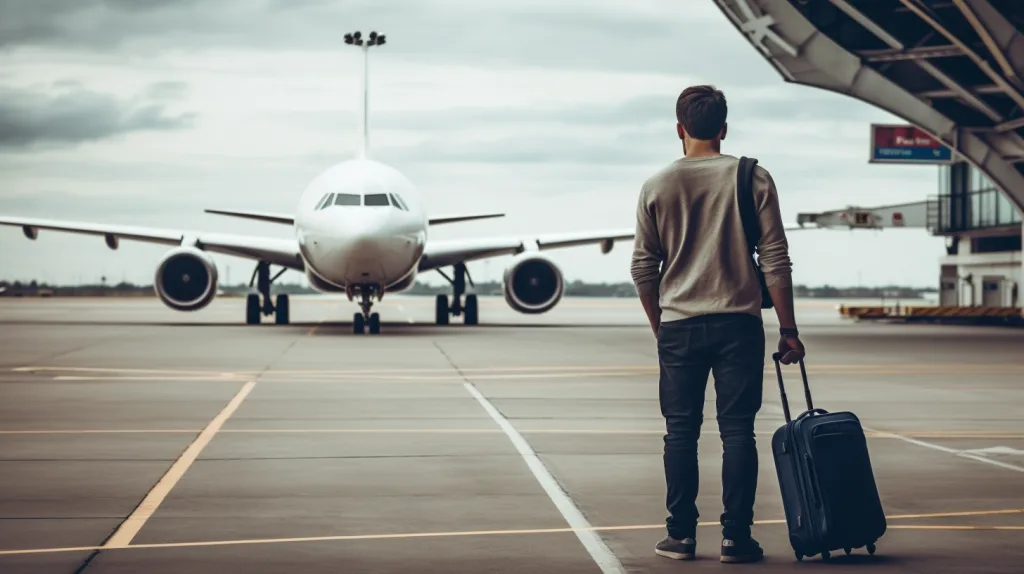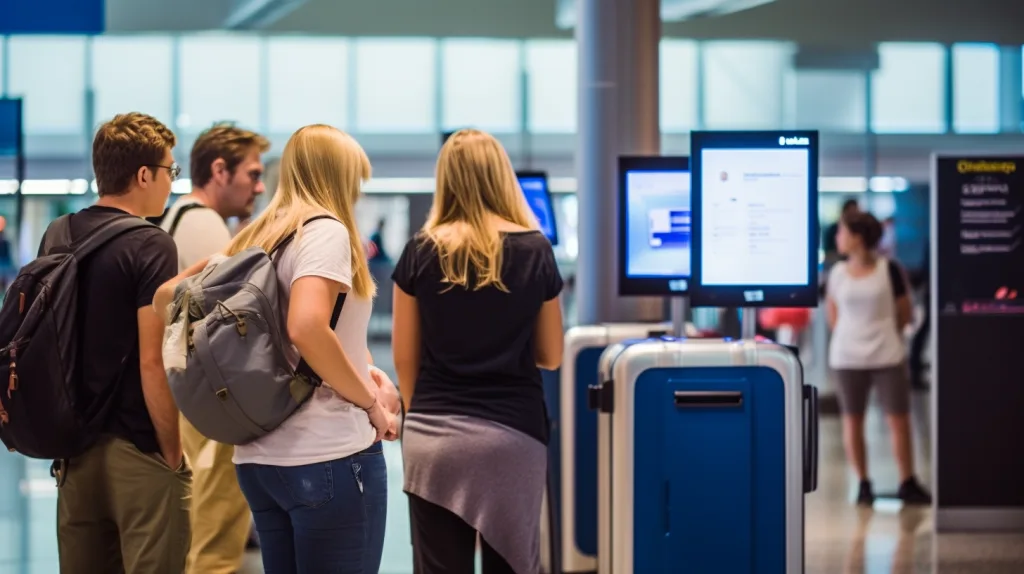Can You Bring a Vape on a Plane Under 21: A 2024 Detailed Guide
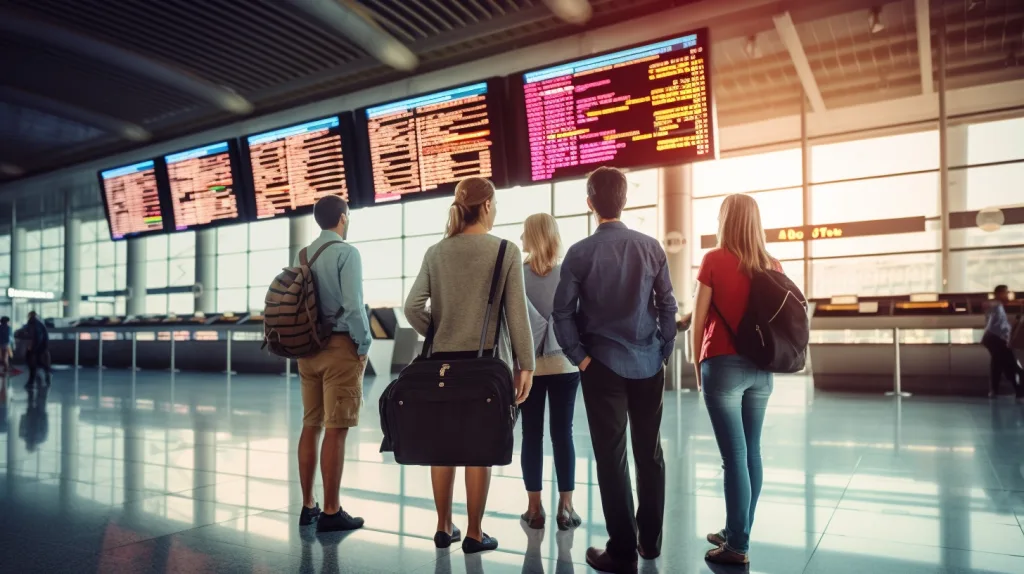
Introduction to Vaping Laws
Vaping, the act of inhaling vapor produced by an electronic cigarette or similar device, has surged in popularity over the past few years, particularly among younger adults and teenagers. As a relatively new phenomenon, the legal landscape surrounding vaping is continuously evolving, with laws varying significantly from one region to another. This introduction aims to shed light on the complexities of vaping laws, especially as they pertain to individuals under the age of 21 and their implications during air travel.
Initially, vaping was introduced as a less harmful alternative to traditional smoking, targeting adult smokers seeking to quit. However, its appeal among the younger demographic, primarily due to flavored e-liquids and the perceived ‘cool’ factor, has led to stringent regulations, especially concerning age restrictions.
In many countries, including the United States, the legal age for purchasing and using vaping products has been raised to 21. This change is part of a broader initiative to curb underage vaping, which has been on the rise in recent years. The laws are not just about sales; they also encompass possession and use, making it illegal for individuals under 21 to vape, even if they do not purchase the products themselves.
The complexity deepens when considering international laws. Each country has its own set of regulations regarding vaping. Some have outright bans, while others have more relaxed laws. For instance, in nations like the UK, the legal age for vaping is 18, whereas countries like Thailand and Brazil have complete bans on the sale and use of vaping products.
For young travelers, particularly those under 21, understanding these laws becomes crucial when planning to travel with vaping devices. Air travel adds another layer of complexity, as airlines and airports have their own set of rules that may not always align with the local legal landscape. These rules can include restrictions on carrying vaping devices on planes, whether in checked luggage or carry-on bags, and the use of such devices during the flight.
Furthermore, the legal ramifications of violating these laws can be severe, ranging from fines to confiscation of the device, and in some cases, legal prosecution. This is especially pertinent for underage vapers who might unknowingly find themselves on the wrong side of the law in a foreign country.
In conclusion, the legal environment surrounding vaping is multifaceted and ever-changing. For young individuals under 21, it is imperative to stay informed about the vaping laws in their home country as well as in any destinations they plan to visit, especially when those travels involve air transportation. Understanding these laws not only helps in complying with regulations but also ensures a hassle-free travel experience. Visit the official FDA website www.fda.gov for information on vaping laws in the United States.
Is Vaping Under 21 Legal?
The legality of vaping for individuals under the age of 21 is a topic that varies widely depending on geographical location and specific local laws. As vaping has grown in popularity, particularly among younger demographics, governments worldwide have responded with a range of regulations aimed at controlling its use. This section explores the legal landscape surrounding vaping for those under 21, highlighting the complexities and differences across various jurisdictions.
United States
In the United States, the federal minimum age for purchasing tobacco products, including e-cigarettes and vaping devices, was raised to 21 in December 2019. This law, known as “Tobacco 21” or “T21”, applies nationwide and is part of a broader effort to reduce tobacco and nicotine use among teens and young adults. It’s important to note that this law doesn’t just restrict the sale of vaping products to those under 21; it also makes it illegal for them to possess or use these products. Government health websites, such as the Centers for Disease Control and Prevention www.cdc.gov, often have detailed information on legal age restrictions for vaping.
European Union
In the European Union, the legal age for purchasing vaping products varies by country, but it is generally 18. Some countries have specific regulations regarding the sale and advertising of vaping products, but there is no EU-wide legislation equivalent to the U.S.’s T21 law. However, individual countries within the EU, like the UK and Germany, strictly enforce the age limit for sales of vaping products.
Other Countries
Globally, the legal age for vaping aligns closely with the legal age for smoking. In countries like Australia and Canada, the legal age is typically 18 or 19, depending on the province or territory. However, there are exceptions. For instance, in Japan, the legal age for vaping is 20, aligning with their legal age for smoking.
Complete Bans
It’s also worth noting that some countries have imposed complete bans on the sale and use of vaping products, regardless of age. Countries like Brazil, Thailand, and Singapore have strict laws against vaping, and violating these laws can lead to significant penalties, including fines and imprisonment.
Implications for Travel
For young travelers under 21, understanding these laws is crucial, especially when planning to travel with vaping devices. Ignorance of the law is not a defense, and in some cases, young individuals have faced legal challenges for possessing or using vaping products in countries with strict age restrictions or bans.
Conclusion
In summary, while vaping is legal in many parts of the world for individuals over a certain age, usually 18 or 21, there are significant variations in laws and regulations. For those under 21, it is essential to be aware of and understand the legal implications of vaping, both in their home country and in any destinations they plan to visit. This knowledge is not only important for legal compliance but also for ensuring a safe and hassle-free travel experience.
Can You Bring a Vape on a Plane?
When it comes to air travel, one of the most common questions among vapers, especially those new to traveling with their devices, is whether they can bring a vape on a plane. The answer is yes, but with specific regulations and guidelines that must be followed to ensure safety and compliance with airline policies.
Airline Regulations
Most airlines allow passengers to carry vaping devices on board, but these must be kept in carry-on bags, not checked luggage. This rule is primarily due to safety concerns regarding the batteries in vaping devices. Lithium-ion batteries, which are commonly used in e-cigarettes and vape mods, pose a fire risk and are considered hazardous materials by aviation authorities. In the event of a battery malfunction, it is safer to have the device in the cabin where an issue can be quickly addressed.
TSA Guidelines
The Transportation Security Administration (TSA) in the United States has specific guidelines for traveling with electronic smoking devices. They must be carried on your person or in carry-on baggage. These devices are not allowed in checked bags. If you are carrying e-liquid, it must comply with the TSA liquids rule, which allows you to carry a quart-sized bag of liquids, aerosols, gels, creams, and pastes in your carry-on bag. These are limited to travel-sized containers that are 3.4 ounces (100 milliliters) or less per item.
Using Vape Devices on Planes
While you can bring your vape device on a plane, using it during the flight is strictly prohibited. All airlines ban the use of e-cigarettes and similar devices aboard aircraft. This ban is in place due to safety concerns, as well as the comfort and health of other passengers. Violating this rule can result in significant penalties, including fines and potential legal action, as well as being banned by the airline.
International Flights
For international flights, the rules can vary depending on the airline and the destination country. It’s crucial to check the regulations of the airline you are flying with, as well as the laws of the destination country regarding vaping devices. Some countries have stricter regulations or even outright bans on e-cigarettes.
Packing Tips
When packing your vape for air travel, it’s advisable to:
- Empty the tank to prevent leaks caused by changes in cabin pressure.
- Store batteries in a safe case to prevent short circuits.
- Bring only the amount of e-liquid necessary for your trip, adhering to TSA guidelines.
Conclusion
In conclusion, you can bring a vape on a plane, but it’s essential to adhere to airline and TSA regulations. Always carry your vaping device and batteries in your carry-on bag, comply with liquid restrictions, and never use the device on the plane. Being aware of and respecting these rules ensures a hassle-free journey for you and your fellow passengers.
Age Restrictions for Vaping on a Plane
Navigating the complexities of age restrictions for vaping, particularly in the context of air travel, can be challenging. While the general rules for carrying vape devices on planes are relatively straightforward, the nuances of age restrictions add an additional layer of consideration for young travelers.
Airline Policies
First and foremost, it’s important to understand that while carrying a vape device on a plane is generally permitted (in carry-on luggage), this does not automatically grant permission for all passengers to do so, especially those under the age of 21. The age restrictions for vaping on a plane typically mirror the legal age for vaping in the country of the airline’s origin or the destination country.
Legal Age for Vaping
In many countries, including the United States, the legal age for purchasing and using vape products is 21. This means that for airlines based in or flying to the U.S., passengers under 21 are not legally permitted to carry vaping devices. This rule is enforced to comply with local laws and regulations regarding tobacco and nicotine product usage by minors.
International Variations
For international flights, the situation can become more complex. Different countries have varying legal ages for vaping – some set it at 18, while others align it with the legal drinking age. It’s crucial for young travelers to be aware of these differences. For instance, a 20-year-old could legally carry a vape device on a flight within a country where the legal vaping age is 18, but not on a flight to a country where the legal age is 21.
Enforcement and Compliance
Airlines are increasingly vigilant in enforcing these age restrictions, often requiring age verification during the booking process or check-in. Non-compliance with these regulations can lead to confiscation of the device, denial of boarding, or other legal consequences.
Responsibility of the Traveler
It is the responsibility of the traveler to be informed about and comply with these age restrictions. Young travelers, especially those under 21, should research the vaping laws of both the airline’s country and the destination country before traveling. Ignorance of the law is not typically accepted as a defense, and the consequences of non-compliance can be severe.
Conclusion
In summary, while carrying a vape on a plane is generally allowed, age restrictions play a crucial role in determining who can legally do so. These restrictions are in place to align with local laws and protect young individuals from potential legal issues. For underage travelers, it’s essential to be aware of and adhere to these regulations to ensure a smooth and lawful travel experience.
Rules for Transporting Vape in Carry-on Bags
Transporting a vape device in carry-on bags requires adherence to specific rules set by aviation authorities and airlines. These regulations are designed to ensure the safety of all passengers and the aircraft. Understanding and following these rules is crucial for anyone planning to travel with a vape device.
Battery Safety
The primary concern with carrying vape devices on planes is the lithium-ion batteries they contain. These batteries are known to pose a fire risk if they are damaged, short-circuit, or overheat. To mitigate this risk, aviation authorities, including the Federal Aviation Administration (FAA) and the International Air Transport Association (IATA), have set clear guidelines:
- Vape devices and batteries must be carried in carry-on bags, not checked luggage.
- Batteries should be protected from short circuits by either being in the device, in a case, or with the terminals covered with tape.
- Spare batteries must also be carried in carry-on luggage and adequately protected.
Liquid Restrictions
E-liquids are subject to the same regulations as other liquids when it comes to air travel. The TSA’s liquid rule states that:
- All liquids, aerosols, gels, creams, and pastes in carry-on bags must be in containers no larger than 3.4 ounces (100 milliliters).
- All containers must fit in a single, clear, quart-sized resealable bag.
- Each passenger is limited to one such bag.
These rules apply to e-liquid bottles, so it’s important to pack them accordingly.
Device Preparation
To prevent accidental activation and potential safety hazards, it’s recommended to:
- Turn off the device or lock it to prevent it from firing.
- Empty the tank to avoid leaks caused by changes in air pressure during the flight.
- Consider disassembling the device if possible, separating the battery from the atomizer.
Compliance with Airline Policies
While the general rules for transporting vape devices are consistent across most airlines, some carriers may have additional restrictions or guidelines. It’s advisable to check with your airline before traveling to ensure compliance with their specific policies.
International Flights
For international travel, be aware that the rules and regulations regarding vaping devices can vary significantly from one country to another. It’s important to research and understand the laws of the destination country to avoid any legal issues upon arrival.
Conclusion
In conclusion, transporting a vape in carry-on bags is permissible, but it requires careful adherence to specific safety guidelines and regulations. By following these rules, vapers can ensure a hassle-free travel experience while maintaining the safety and comfort of themselves and their fellow passengers.
Managing Vapes on International Flights
Traveling with vaping devices on international flights adds an extra layer of complexity due to varying regulations across different countries and airlines. It’s crucial for vapers, especially those who frequently travel abroad, to understand and navigate these diverse rules to ensure a smooth and compliant journey.
Research Destination Country Laws
Before embarking on an international flight, the first step is to research the vaping laws of the destination country. Vaping regulations can vary widely; some countries have strict laws or even outright bans on the sale and use of vaping products. For instance, countries like Thailand and Singapore have stringent anti-vaping laws, and carrying a vape device into these countries can lead to fines or legal issues.
Airline-Specific Policies
In addition to country-specific laws, different airlines may have their own set of policies regarding the transport of vape devices. While most airlines follow the general rule of allowing vapes in carry-on luggage only, some might have additional restrictions or guidelines. It’s advisable to check the airline’s policy before traveling. This information is usually available on the airline’s website or can be obtained by contacting their customer service.
Battery and E-Liquid Regulations
The standard rules for carrying batteries and e-liquids in carry-on luggage apply to international flights as well. Ensure that all batteries are properly stored to prevent short circuits and that e-liquids comply with the liquid restrictions (containers not exceeding 100 ml and all fitting in a single quart-sized bag).
Customs and Security Checks
Be prepared for customs and security checks at international airports. Security personnel may ask questions about your vaping device, and you should be ready to explain that it is for personal use. Keep the device and its components easily accessible in your carry-on luggage for inspection.
Cultural Sensitivity and Discretion
It’s important to be culturally sensitive and discreet with your vaping device. In some countries, vaping might be frowned upon or misunderstood. Always use your vape device in designated smoking areas and avoid vaping in public spaces where it might be considered inappropriate or disrespectful.
Backup Plan
Given the varying regulations and potential for strict enforcement in some countries, it’s wise to have a backup plan. Consider alternatives like nicotine patches or gum, especially if you’re traveling to a country with stringent anti-vaping laws or where accessing vaping supplies might be challenging.
Conclusion
Managing vapes on international flights requires careful planning and awareness of the laws and regulations of both the airline and the destination country. By being well-informed and prepared, you can navigate these challenges effectively, ensuring that your travel experience is as smooth and hassle-free as possible. Remember, the key is to prioritize safety, compliance, and respect for local customs and regulations. Government travel advisories, such as the U.S. Department of State’s travel website travel.state.gov, can be useful.
Understanding the TSA’s Stance on Vapes
Traveling with vapes in the United States involves adhering to the guidelines set by the Transportation Security Administration (TSA), the agency responsible for security at airports. The TSA’s stance on vapes is primarily focused on safety and security, aligning with its overall mission to protect the nation’s transportation systems. Understanding these guidelines is crucial for travelers who wish to bring their vaping devices on flights.
Carrying Vapes in Carry-On Bags
The TSA allows passengers to bring electronic smoking devices, including vapes, e-cigarettes, and atomizers, in their carry-on bags. This is a critical point to note, as these devices are not permitted in checked luggage. The reason behind this rule is the potential fire hazard posed by the lithium batteries in these devices. In the cabin, any issue can be quickly addressed, whereas in the cargo hold, it could go unnoticed with potentially serious consequences.
Battery Regulations
The TSA requires that all electronic devices powered by lithium batteries must be carried in the cabin. This includes the batteries used in vaping devices. Passengers are advised to take measures to prevent accidental activation or overheating of the devices. This can be achieved by turning off the device, protecting the firing button, or completely disassembling the device (removing the battery from the atomizer).
E-Liquid Restrictions
When it comes to e-liquids, the TSA’s regulations for liquids apply. Travelers are allowed to bring a quart-sized bag of liquids, aerosols, gels, creams, and pastes through the checkpoint. These are limited to travel-sized containers that hold 3.4 ounces (100 milliliters) or less per item. It’s important to pack e-liquids in this bag to comply with TSA regulations.
Security Screening
Vaping devices and e-liquids are subject to the same screening procedures as other items in carry-on bags. Travelers should be prepared to remove these items from their bags and place them in a bin for X-ray screening. Transparency with TSA agents about carrying a vape device can facilitate a smoother screening process.
International Considerations
For international flights departing from or arriving in the United States, the TSA’s rules still apply. However, travelers should also be aware of the regulations in their destination country regarding vaping devices.
Conclusion
In summary, the TSA’s stance on vapes is guided by safety considerations, particularly concerning the batteries in these devices. By following the TSA’s guidelines, travelers can ensure that they are compliant with regulations, reducing the likelihood of delays or complications during security screening. Remember, the key to a hassle-free travel experience with a vape is preparation and adherence to these rules.
Safety Concerns of Vaping on Plane
Vaping on an airplane is not only against airline policies but also raises significant safety concerns. Understanding these concerns is crucial for passengers who vape, as it underscores the reasons behind strict regulations and the prohibition of using vaping devices during flights. Research articles from health organizations like the World Health Organization www.who.int may provide insights.
Fire Hazard
One of the primary safety concerns with vaping devices on planes is the risk of fire. The lithium-ion batteries used in e-cigarettes and vape mods can be a potential fire hazard, especially if they malfunction, are damaged, or come into contact with metal objects. In the confined space of an aircraft, a fire can be catastrophic. This risk is the main reason why vaping devices must be carried in carry-on luggage, where any incident can be quickly addressed, rather than in checked baggage where it could go unnoticed.
Air Quality
Another concern is the impact of vaping on the air quality inside the cabin. Airplanes have closed ventilation systems, and the vapor exhaled by e-cigarettes can affect the cabin environment. This is particularly relevant given the diverse group of passengers on a flight, including children, elderly individuals, and those with respiratory issues, who could be adversely affected by exposure to vape aerosols.
Nicotine Exposure
Vaping devices typically contain nicotine, which is a highly addictive substance. In the confined space of an airplane, the use of a vaping device could inadvertently expose other passengers to nicotine, which is especially concerning for non-smokers and minors.
Regulatory Compliance
Airlines are required to comply with aviation safety regulations, which include maintaining a safe and comfortable environment for all passengers. Permitting vaping on planes would not only be a fire risk but also a violation of these regulations, potentially leading to legal and operational complications for the airline.
Potential for Misuse
The use of vaping devices on planes could also lead to their misuse. For instance, passengers might attempt to tamper with smoke detectors in lavatories to vape, which is not only dangerous but also a federal offense.
Conclusion
In conclusion, the safety concerns of vaping on a plane are significant and multifaceted, ranging from fire hazards to air quality issues and regulatory compliance. These concerns justify the strict policies airlines have in place regarding the prohibition of vaping during flights. For the safety and comfort of all passengers, it is essential that individuals who vape adhere to these rules and refrain from using their devices while on board.
Packaging and Storing Your Vape for Travel
Proper packaging and storage of your vape device for air travel are essential not only for complying with airline regulations but also for ensuring the safety and functionality of your device. Here are some guidelines to help you pack and store your vape effectively when traveling.
Disassembling the Device
Before packing, it’s advisable to disassemble your vaping device. Separate the battery from the atomizer and tank if possible. This not only reduces the risk of accidental activation but also minimizes the chances of leakage or damage.
Battery Safety
Lithium-ion batteries, which power most vaping devices, must be handled with care. Store batteries in a case specifically designed for battery storage to prevent short circuits. Never carry loose batteries in your pocket or bag where they could come into contact with metal objects like coins or keys.
Leak Prevention
Changes in air pressure during a flight can cause e-liquid to leak from your tank. To prevent this, either empty your tank before the flight or store it in a vertical position. You can also store it in a sealable plastic bag as an extra precaution against leakage.
E-Liquid Storage
Comply with the Transportation Security Administration (TSA) guidelines for liquids: all liquids, including e-liquids, should be in containers of no more than 100 ml (3.4 ounces) and all containers should fit in a single, clear, quart-sized zip-top bag. This is particularly important for international travel, where liquid restrictions are strictly enforced.
Protecting the Device
Use a hard case or padded bag to store your disassembled vape device and its components. This protects the device from physical damage and keeps all parts securely in one place.
Accessibility
Pack your vape gear in a way that it is easily accessible in your carry-on luggage. This is important as you may need to present your device and e-liquids for inspection at airport security checkpoints.
Spare Parts
If you’re going on a long trip, consider bringing spare coils, batteries, and other essential parts. However, remember to pack these spares following the same safety guidelines.
Compliance with Airline Policies
Finally, always check your airline’s specific policies regarding the transport of vaping devices and accessories. Some airlines might have additional requirements or restrictions.
Conclusion
Proper packaging and storing of your vape device for air travel ensure that you comply with airline regulations and TSA guidelines, and also protect your device from damage. By following these tips, you can have a hassle-free journey while keeping your vaping equipment safe and ready for use upon arrival at your destination.
Legal Ramifications of Vaping on a Plane Under 21
Vaping on a plane under the age of 21 not only violates airline policies but can also lead to serious legal consequences. It’s crucial for young travelers to understand the potential legal ramifications that can arise from such actions, as ignorance of the law and airline regulations is not a valid defense.
Violation of Federal and International Laws
In many countries, including the United States, vaping on an airplane is considered a violation of federal aviation laws. For individuals under 21, this act can compound legal issues, as they are also breaking the law by possessing and using a vaping device. The consequences can be more severe if the flight is international, as it may involve the laws of the destination country, which could have even stricter regulations on vaping.
Penalties and Fines
Being caught vaping on a plane can lead to substantial fines. These fines are not just for the act of vaping but can also include penalties for tampering with smoke detectors in airplane lavatories, which is a common tactic used by individuals trying to vape discreetly. The fines can amount to thousands of dollars, depending on the severity of the offense and the laws of the country in which the airline is based or the plane is registered.
Criminal Charges
In some cases, vaping on a plane can lead to criminal charges, especially if the act is considered to endanger the safety of the flight. This is a serious matter that can result in a criminal record, affecting future travel opportunities, employment prospects, and more.
Airline Bans
Airlines have the authority to ban passengers who violate their policies. Being caught vaping on a plane can lead to a temporary or permanent ban from the airline, which can be a significant inconvenience, especially for frequent travelers.
Detainment and Deportation
For international flights, the consequences can escalate to detainment upon landing, especially in countries with strict anti-vaping laws. In extreme cases, this could even lead to deportation or being barred from re-entering that country.
Impact on Future Travel
Having a record of such an offense can impact future travel plans. It can lead to increased scrutiny at airport security checks and potential difficulties in obtaining visas or passing through customs in certain countries.
Conclusion
The legal ramifications of vaping on a plane under 21 are serious and far-reaching. They can include hefty fines, criminal charges, airline bans, detainment, and future travel restrictions. It is imperative for young travelers to understand and respect the laws and airline policies regarding vaping to avoid these severe consequences. The risks far outweigh any perceived benefits of vaping on a plane, making it a decision that should be avoided at all costs.
Tips for Young Vapers Travelling by Air
Traveling by air as a young vaper can be a smooth experience if you are well-prepared and understand the rules and regulations surrounding the transport and use of vaping devices. Here are some essential tips to help young vapers navigate air travel without any hassles.
Know the Legal Age Restrictions
Before you travel, make sure you are aware of the legal age for vaping in both your departure and destination locations. If you are under the legal age, you should not carry a vaping device or e-liquids, as this could lead to legal issues.
Research Airline and Airport Policies
Different airlines and airports may have specific regulations regarding vaping devices. Check these policies in advance to ensure you comply with them. This includes rules about where you can carry your device (usually in carry-on luggage) and whether you can bring spare batteries.
Pack Your Vape Device Correctly
Ensure your vape device is turned off and, if possible, disassembled. Batteries should be stored safely to prevent short circuits, ideally in a dedicated battery case. E-liquids should be in containers of 100ml or less and placed in a clear, quart-sized bag.
Be Prepared for Security Checks
At security checks, you may need to remove your vape device from your carry-on bag for screening. Be transparent with security personnel about carrying a vape device to avoid any misunderstandings.
Do Not Vape on the Plane
Using your vape device on the plane is strictly prohibited and can lead to legal consequences. Even if you are of legal age to vape, respect the airline’s rules and the comfort of your fellow passengers.
Consider Alternatives
For long flights, consider alternatives to vaping, such as nicotine gum or patches, to manage cravings. This is especially important if you are traveling to a country with strict vaping laws.
Be Aware of Destination Laws
Laws regarding vaping can vary greatly from one country to another. Some countries have strict regulations or even outright bans on vaping products. Research these laws to avoid legal trouble upon arrival.
Respect Cultural Norms
In some cultures, vaping is frowned upon or misunderstood. Always use your vape device discreetly and in designated smoking areas, respecting local customs and norms.
Have a Backup Plan
If you are traveling to a destination with strict vaping laws, have a backup plan for managing without your device. This could mean leaving your vape at home and using alternative nicotine replacement therapies.
Stay Informed
Regulations and laws regarding vaping are constantly evolving. Stay informed about the latest rules and guidelines to ensure a hassle-free travel experience.
Conclusion
Traveling as a young vaper requires careful planning and awareness of the laws and regulations regarding vaping. By following these tips, you can ensure a smooth journey while respecting the rules and the comfort of other passengers. Remember, the key to a stress-free trip is preparation and compliance.
Custom Rules: Vaping Devices in Different Countries
When traveling with vaping devices, it’s crucial to be aware that regulations can vary significantly from one country to another. Each nation has its own set of rules regarding the use, sale, and possession of vaping products. For vapers, especially those traveling internationally, understanding these diverse regulations is key to avoiding legal issues. Here’s an overview of how some countries approach vaping devices.
United States
In the United States, the legal age for purchasing and using vaping products is 21. The Transportation Security Administration (TSA) allows e-cigarettes and vaping devices in carry-on bags but not in checked luggage due to fire safety concerns. Vaping is not permitted on any commercial flights.
United Kingdom
The UK is relatively lenient regarding vaping. The legal age for purchasing vaping products is 18. Vaping devices are allowed in carry-on luggage, but their use is banned on flights. The UK also has specific regulations on the size and strength of e-liquid bottles.
Australia
Australia’s vaping laws vary by state, but generally, the sale of nicotine-containing e-liquids is highly regulated. Travelers can bring their vaping devices on flights in their carry-on luggage, but using them on the plane is prohibited.
Japan
In Japan, vaping devices that contain nicotine are considered medical products and are subject to strict regulations. Non-nicotine vapes, however, are more accessible. Vaping devices can be carried on flights, but their use onboard is not allowed.
Thailand
Thailand has some of the strictest vaping laws. The sale and possession of e-cigarettes and vaping products are illegal, and violations can lead to fines or imprisonment. Travelers should avoid bringing vaping devices into the country.
Singapore
Singapore also prohibits the sale and use of e-cigarettes and vaping products. Possession of a vaping device can lead to significant fines and penalties. It’s advisable not to bring any vape-related items when traveling to Singapore.
Canada
In Canada, the legal age for vaping varies by province, ranging from 18 to 19 years old. Vaping devices are allowed in carry-on luggage on flights, but their use is prohibited during the flight.
European Union
Within the EU, regulations can vary, but there are common rules like a maximum nicotine concentration for e-liquids and child-resistant packaging. The legal age for purchasing vaping products is generally 18. Vaping devices are allowed in carry-on bags, but using them on flights is banned.
Conclusion
This overview highlights the diverse and sometimes stringent regulations surrounding vaping in different countries. It’s imperative for travelers who vape to research and understand the specific laws of the countries they plan to visit. Failure to comply with these laws can result in fines, confiscation of the device, or even more severe legal consequences. Always prioritize local laws and customs to ensure a safe and hassle-free travel experience.
Potential Fines or Consequences for Ignoring Airline Vaping Policies
Ignoring airline vaping policies can lead to a range of consequences, from fines to more severe legal repercussions. Airlines enforce these policies to ensure the safety and comfort of all passengers, as well as to comply with aviation laws and regulations. Understanding the potential consequences of non-compliance is crucial for anyone considering using a vaping device on a plane.
Monetary Fines
One of the most immediate consequences of violating airline vaping policies is the imposition of fines. These fines can be substantial, often amounting to hundreds or even thousands of dollars, depending on the airline and the jurisdiction. The fines are not just for the act of vaping but can also include penalties for related offenses, such as tampering with smoke detectors in airplane lavatories.
Legal Action
In some cases, particularly where safety is compromised (such as tampering with smoke detectors), legal action may be taken against the individual. This could result in criminal charges, which might lead to a criminal record. The severity of legal action depends on the specific laws of the country in which the airline is based or the country of arrival or departure.
Removal from Flight
If a passenger is caught vaping on a plane, they can be removed from the flight. This is a serious consequence that can lead to missed connections, additional travel expenses, and significant inconvenience.
Ban from Airline
Airlines have the authority to ban passengers who violate their policies. A ban could be temporary or permanent, depending on the severity of the offense. This can have long-term implications for future travel plans, especially for frequent flyers or those who rely on specific airlines for travel to certain destinations.
Impact on Travel Record
Having a record of such an offense can impact a person’s travel profile. It could lead to increased scrutiny at airport security checks in the future and potential difficulties in obtaining visas or passing through customs, especially in countries with strict anti-vaping laws.
Social and Professional Repercussions
Beyond the immediate legal and financial consequences, there can be social and professional repercussions. This includes negative publicity, especially in today’s digital and social media age, and potential impact on one’s professional life, particularly for those in positions of responsibility or public trust.
Conclusion
The potential fines and consequences of ignoring airline vaping policies are significant and varied, ranging from financial penalties to legal action and social repercussions. It is vital for passengers to adhere to these policies, not only to avoid these consequences but also to maintain the safety and comfort of all passengers on board. The risks associated with non-compliance far outweigh any perceived benefits of vaping on a plane.
Alternatives to Vaping While Travelling
For many vapers, especially those accustomed to frequent use, the prospect of long flights and travel in regions with strict vaping regulations can be challenging. However, there are several alternatives to vaping that can be used while traveling to manage cravings and maintain comfort. Exploring these options can make your travel experience more pleasant and stress-free.
Nicotine Replacement Therapy (NRT)
Nicotine replacement therapies, such as nicotine gum, patches, lozenges, or inhalers, can be effective in managing nicotine cravings. These products are designed to deliver small, steady doses of nicotine without the harmful effects of tobacco smoke or vapor. They are widely available and can be used discreetly during flights and in non-smoking areas.
Behavioral Strategies
Behavioral strategies can be a helpful way to manage cravings. This includes distraction techniques like reading, listening to music, watching movies, or engaging in puzzles or games. Deep breathing exercises and mindfulness practices can also help in managing moments of craving by focusing your attention and reducing stress.
Snacking on Healthy Foods
Sometimes, oral fixation can be managed by snacking. Opt for healthy snacks like fruits, nuts, or vegetables. Chewing gum or sucking on hard candies can also provide a distraction from the urge to vape.
Staying Hydrated
Keeping yourself well-hydrated can reduce the urge to vape. Drinking water, herbal teas, or juice can keep your mouth busy and help manage cravings. Avoid excessive caffeine or alcohol, as they can increase the desire to smoke or vape.
Prescription Medications
For long-term travelers or those who find it particularly challenging to go without vaping, prescription medications like varenicline (Chantix) or bupropion (Zyban) may be an option. These medications are designed to reduce nicotine cravings and withdrawal symptoms. Consult with a healthcare provider to discuss if these are suitable for you.
Physical Activity
Engaging in physical activity, especially during layovers or before a flight, can help manage stress and reduce cravings. Simple exercises like walking, stretching, or yoga can be done in most places and are beneficial for overall well-being.
Support and Counseling
Seeking support from friends, family, or online communities can provide encouragement and motivation. For some, professional counseling or joining support groups can be beneficial in managing the psychological aspects of nicotine addiction.
Planning and Preparation
Planning your trip with these alternatives in mind can make it easier to manage without vaping. Pack the necessary items like NRTs, snacks, and entertainment to keep you occupied and comfortable during your journey.
Conclusion
While traveling without vaping might seem daunting at first, there are numerous alternatives available to help manage cravings and maintain comfort. By preparing in advance and exploring different options, you can enjoy your travels without relying on your vape device. Remember, the key is to find what works best for you and to be open to trying new strategies.
Real-life Cases of Vaping on Planes
Examining real-life cases of vaping on planes can provide valuable insights into the consequences of such actions and the importance of adhering to airline policies. These incidents highlight not only the legal and financial repercussions but also the impact on flight safety and passenger comfort. Here are a few notable instances that have occurred:
Case 1: Emergency Landing Due to Vape Device
In one incident, a passenger’s vape device accidentally activated in their carry-on bag, causing it to overheat and emit smoke. This led to an emergency landing as the crew feared there was a fire on board. The passenger faced legal action for endangering the safety of the flight and was fined for violating airline regulations.
Case 2: Fine for Disabling Smoke Detector
A passenger was caught vaping in the lavatory of a flight and had attempted to disable the smoke detector. This not only triggered an alarm but also led to the passenger being detained upon landing. The individual faced a hefty fine and was banned from the airline. Additionally, they faced criminal charges for tampering with safety equipment on the aircraft.
Case 3: Conflict with Flight Crew
In another case, a passenger was found vaping in their seat during a flight. When confronted by the flight crew, the individual became belligerent, leading to a conflict that disrupted the flight and caused distress to other passengers. The individual was fined for violating airline policies and faced additional charges for causing a disturbance.
Case 4: International Incident
A traveler was caught vaping on an international flight to a country with strict anti-vaping laws. Upon landing, the passenger was detained by local authorities and faced legal proceedings in the foreign country. The incident resulted in a significant fine and a temporary travel ban from that country.
Case 5: Health Emergency
A young passenger, unaware of the risks, vaped on a plane, leading to a health emergency. The individual experienced severe respiratory distress, prompting the crew to administer medical assistance and alerting authorities for medical support upon landing. This case highlighted the health risks associated with vaping, particularly in enclosed spaces like aircraft.
Conclusion
These real-life cases of vaping on planes underscore the serious consequences that can arise from such actions. They serve as a reminder of the importance of adhering to airline policies and regulations regarding vaping. The repercussions of ignoring these rules can be severe, ranging from fines and legal action to health emergencies and disruptions to flight operations. For the safety and well-being of all passengers, it is crucial to respect and follow the guidelines set by airlines and aviation authorities.
Expert Opinions: Vaping and Air Travel
The intersection of vaping and air travel is a topic of ongoing discussion and analysis among experts from various fields, including aviation safety, public health, and regulatory bodies. Their insights provide a deeper understanding of the implications and considerations surrounding the use of vaping devices on aircraft. Here’s a summary of what experts have to say on this matter.
Aviation Safety Experts
Aviation safety experts are primarily concerned with the potential fire hazard posed by the lithium-ion batteries in vaping devices. They emphasize that these batteries, if damaged or improperly stored, can overheat and lead to fires, which are particularly dangerous in an aircraft environment. Their stance is that strict regulation and proper handling of these devices are essential for ensuring the safety of all passengers on board.
Public Health Professionals
Public health professionals focus on the impact of vaping on overall air quality within the confined space of an airplane. They point out that the long-term health effects of inhaling second-hand vapor are still not fully understood, and caution should be exercised. They advocate for a precautionary approach, erring on the side of protecting the health of all passengers, including vulnerable groups like children and those with respiratory conditions.
Regulatory Authorities
Representatives from regulatory bodies, such as the Federal Aviation Administration (FAA) and the Transportation Security Administration (TSA), reiterate the importance of adhering to existing regulations regarding the transport and use of vaping devices on planes. They highlight that these regulations are in place not just for legal compliance, but for the safety and well-being of everyone on the flight.
Addiction Specialists
Addiction specialists discuss the challenges faced by individuals who are dependent on nicotine during long flights. They suggest that air travel can be an opportunity for smokers and vapers to explore nicotine replacement therapies (NRTs) or other methods to manage cravings. They also emphasize the importance of planning and preparing for flights, such as carrying NRTs and engaging in activities to distract from cravings.
Airline Industry Representatives
Representatives from the airline industry stress the importance of clear communication and enforcement of their policies regarding vaping. They note that most airlines have strict no-vaping policies on flights and that these are in line with broader efforts to ensure passenger comfort and safety. They also point out the operational challenges and potential disruptions caused by passengers who violate these policies.
Conclusion
Expert opinions converge on the consensus that while vaping is a personal choice, its intersection with air travel involves broader considerations of safety, health, and regulatory compliance. The unanimous advice is for travelers to respect and adhere to airline policies and regulations regarding vaping, both for their own well-being and for the safety and comfort of fellow passengers. These perspectives underscore the importance of responsible vaping practices in the context of air travel.
Common Misconceptions About Vaping on Planes
There are several misconceptions about vaping on planes that can lead to confusion and potential legal issues for travelers. Dispelling these myths is important for ensuring that passengers understand the rules and regulations regarding the use of vaping devices during air travel. Here are some of the most common misconceptions and the realities behind them.
Misconception 1: Vaping is Allowed in Airplane Bathrooms
Reality: Vaping is prohibited on all commercial flights, including in the bathrooms. This rule is enforced strictly due to safety concerns, such as the potential fire hazard from e-cigarette batteries and the need to maintain air quality in the cabin. Tampering with smoke detectors in airplane bathrooms, which is often done to vape discreetly, is a federal offense and can lead to serious legal consequences.
Misconception 2: Vapor from E-Cigarettes is Harmless to Others
Reality: While e-cigarette vapor is generally considered less harmful than traditional cigarette smoke, it is not completely harmless. The vapor can contain nicotine and other chemicals that may affect air quality and can be a concern for other passengers, especially those with respiratory issues or allergies. The enclosed environment of an airplane makes this a more significant issue.
Misconception 3: E-Cigarettes are Not a Fire Hazard
Reality: The lithium-ion batteries in e-cigarettes can pose a fire risk if they malfunction, are damaged, or are not stored properly. There have been instances of e-cigarettes causing fires on planes, which is why they must be carried in carry-on luggage where any issue can be quickly addressed.
Misconception 4: Vaping Rules are the Same on All Airlines
Reality: While there are general guidelines and regulations regarding vaping on planes, specific policies can vary between airlines. Some airlines may have additional restrictions or guidelines. It’s important to check with your airline before traveling to understand their specific policies.
Misconception 5: It’s Legal to Vape on a Plane if You’re Over the Legal Age
Reality: Regardless of age, vaping on a plane is prohibited. This rule applies to all passengers, regardless of whether they are of legal age to purchase and use vaping products.
Misconception 6: Vaping Devices are Allowed in Checked Luggage
Reality: Vaping devices, especially those containing lithium-ion batteries, must be carried in carry-on luggage. This is to ensure that any potential fire risks can be managed effectively by the cabin crew.
Conclusion
Understanding the realities behind these common misconceptions is crucial for anyone who vapes and plans to travel by air. Adhering to airline policies and regulations is not only a matter of legal compliance but also a consideration for the safety and comfort of all passengers. By being informed, travelers can ensure a hassle-free journey while respecting the rules of air travel.
Proactive Measures for Young Vapers during Air Travel
Young vapers planning to travel by air can take several proactive measures to ensure a smooth and compliant journey. Being prepared and informed about the regulations and potential challenges can significantly enhance the travel experience. Here are some key steps that young vapers can follow:
Verify Age-Related Regulations
Before planning your trip, check the legal age for vaping in both your departure and destination countries. If you are under the legal age, it’s best to leave your vaping device at home to avoid legal complications.
Research Airline and Airport Policies
Different airlines and airports may have specific rules regarding the transport of vaping devices. Familiarize yourself with these policies to avoid any surprises at the airport. Remember, ignorance of the rules is not an excuse.
Pack Vaping Devices Appropriately
Ensure that your vaping device and any spare batteries are packed in your carry-on luggage. Batteries should be stored in a safe case to prevent short circuits. E-liquids should comply with liquid restrictions (containers no larger than 100 ml) and be placed in a clear, quart-sized bag.
Plan for Security Checks
Be prepared to present your vaping device and accessories during security screenings. Keeping them easily accessible in your carry-on bag can expedite the process.
Abide by No-Vaping Policies on Planes
Respect the airline’s no-vaping policy during the flight. If you anticipate nicotine cravings, consider alternative solutions like nicotine gum or patches.
Be Aware of Destination Laws
Laws and attitudes towards vaping can vary greatly from one country to another. In some places, vaping might be heavily restricted or even illegal. Ensure you are aware of these laws to avoid legal issues upon arrival.
Use Discretion
If you are of legal age to vape and plan to do so during layovers, use discretion. Always vape in designated smoking areas and be mindful of local customs and norms.
Carry Necessary Documentation
If you’re traveling for a reason that necessitates the use of a vaping device (such as a vaping competition or business), carry any necessary documentation that explains and supports your reason for carrying the device.
Stay Informed
Regulations regarding vaping and air travel can change. Stay informed about the latest rules and guidelines by checking relevant websites or contacting the airline before your trip.
Respect Fellow Passengers
Remember that your actions can impact other passengers. Even in areas where vaping is allowed, be considerate of those around you.
Conclusion
By taking these proactive measures, young vapers can navigate the complexities of air travel with ease. Preparation, respect for the rules, and consideration for others are key to a hassle-free journey. Remember, the goal is to ensure your safety and compliance, as well as the comfort and well-being of your fellow travelers.
Answers to Frequently Asked Questions About Vaping on Planes Under 21
Navigating the rules and regulations of vaping, especially for those under 21, can be confusing. To help clarify common concerns, here are answers to some frequently asked questions about vaping on planes for individuals under the age of 21.
Can I bring my vape on a plane if I’m under 21?
Yes, you can bring your vape on a plane in your carry-on luggage, regardless of your age. However, you must comply with the airline’s policies and the legal age restrictions for vaping in both your departure and destination countries.
Is it legal to vape on a plane?
No, it is illegal to vape on a plane. This applies to all passengers, regardless of age. Airlines strictly prohibit the use of vaping devices on board due to safety and health concerns.
What should I do with my vape when going through airport security?
When going through airport security, keep your vape device and any e-liquids in your carry-on bag. You may need to place them in a separate bin for X-ray screening. Ensure that all liquids comply with the TSA’s 3-1-1 liquids rule.
Can I carry e-liquids in my carry-on?
Yes, you can carry e-liquids in your carry-on bag, but they must adhere to the TSA’s 3-1-1 liquids rule. This means each container should not exceed 3.4 ounces (100 milliliters), and all containers must fit in a single, quart-sized, clear, zip-top bag.
What happens if I’m caught vaping on a plane?
If you are caught vaping on a plane, you could face serious consequences, including fines, legal action, and being banned by the airline. The severity of the penalties can vary depending on the airline and the jurisdiction.
Are the rules different for international flights?
The basic rules for carrying and using vape devices on planes are generally the same for international flights. However, you should be aware of the vaping laws in the destination country, as they can vary significantly.
Can I use my vape during a layover?
This depends on the airport’s smoking policies. If you are in an airport that allows smoking in designated areas, you may use your vape there. Always follow the airport’s rules and be respectful of other passengers.
What if the legal age for vaping is lower in my destination country?
Even if the legal age for vaping is lower in your destination country, you must adhere to the airline’s no-vaping policy during the flight. Once you arrive, you can follow the local laws regarding vaping.
Can I pack my vape in checked luggage?
No, you should not pack your vape or any batteries in checked luggage due to safety concerns. Always carry them in your carry-on bag.
Conclusion
Understanding the rules and regulations about vaping on planes is crucial, especially for young travelers under 21. Always prioritize safety, comply with airline and airport policies, and respect the laws of both your departure and destination countries to ensure a hassle-free travel experience.
Conclusion: Informed Travel Decisions for Young Vapers
Navigating the world of air travel as a young vaper requires careful consideration and adherence to various regulations and policies. The key to a smooth and hassle-free journey lies in being well-informed and prepared. Here are the main takeaways for young vapers planning to travel by air:
Understanding Legal Age Restrictions
It’s crucial to be aware of the legal age restrictions for vaping both in your home country and the destination you plan to visit. These laws are in place for a reason, and respecting them is essential for a trouble-free travel experience.
Complying with Airline and Airport Policies
Every airline and airport may have its own set of rules regarding vaping devices. Familiarizing yourself with these policies before your journey can prevent unexpected complications during your travel.
Prioritizing Safety
The safety concerns associated with carrying vaping devices, particularly the batteries, cannot be overstated. Ensuring that your device and its components are safely packed in your carry-on luggage is a responsibility that should be taken seriously.
Respecting No-Vaping Policies on Planes
The prohibition of vaping on planes is a universal policy across all airlines. Adhering to this rule is not only a matter of legal compliance but also a courtesy to your fellow passengers.
Being Prepared for Security Checks
Expect to present your vaping device and e-liquids during security screenings. Packing them in an easily accessible manner can facilitate a smoother process at checkpoints.
Considering Alternatives
For managing cravings during long flights, consider alternatives like nicotine patches, gum, or lozenges. These can be effective ways to stay comfortable without violating any rules.
Staying Informed
Laws and regulations regarding vaping are subject to change. Keeping yourself updated with the latest information can help you avoid any unintended violations.
Respecting Cultural Norms and Regulations
When traveling internationally, be mindful of the cultural norms and legal regulations of your destination country. What might be acceptable in one place could be frowned upon or even illegal in another.
Conclusion
For young vapers, traveling by air doesn’t have to be a daunting prospect. By staying informed about the laws and regulations, packing appropriately, and respecting the rules and other passengers, you can ensure a pleasant and uneventful journey. Remember, the goal is to enjoy your travels while maintaining responsible vaping practices. Safe travels!
- Where to Buy a Fake ID - January 19, 2024
- What Happens If You Are Caught Vaping Under 18? - January 12, 2024
- Can You Bring a Vape on a Plane Under 21: A 2024 Detailed Guide - December 29, 2023

